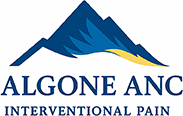Platelet-rich Plasma (PRP)
Platelet-rich plasma or PRP is a substance obtained from processed blood. It has remarkable healing and regenerative properties and can be used for cosmetic purposes.
Blood consists of a liquid component known as plasma and solid components which include the red blood cells (RBCs), white blood cells (WBCs), and platelets. Platelets play an important role in forming blood clots. They also contain special proteins, known as growth factors, which help with our body’s healing process. Platelet-rich plasma is processed from your own blood and consists of plasma with a high concentration of platelets. A normal blood specimen contains only 6% platelets, while platelet-rich plasma contains 94% platelets. It also has 5 to 10 times the concentration of growth factors found in normal blood.
To obtain PRP, a small amount of your blood is drawn from your arm and spun in a special machine called a centrifuge to separate the plasma and other blood components including the platelets. Plasma with a high concentration of platelets is then isolated and kept aside in a sterile syringe to be injected.
Indications
Hair Loss
- Platelet-rich plasma (PRP) may be used to treat areas of hair loss.
- For the procedure, PRP is injected into the hair loss areas of the scalp after administering a topical anesthetic. Your hair is then washed and you may return home. Platelets, growth factors and other components of PRP help to stimulate the growth of hair follicles in the scalp. Treatment may be repeated every 3 to 4 months.
- Platelet-rich plasma may also be used during and after hair transplant surgery. It is injected, sprayed or laid into donor site incisions where the hair grafts are obtained or at recipient sites that have been prepared to receive these grafts. PRP promotes healing, reduces scarring and facilitates uptake of the grafts.
- As with most treatments, PRP is rarely associated with risks and complications such as bruising from where the blood is drawn, temporary hair loss and headache immediately after the procedure.
Facial Rejuvenation
- Your skin may develop fine lines, wrinkles, and spots due to aging, sun exposure, smoking and alcohol consumption. PRP may be used to help rejuvenate the face.
- For this procedure, the area to be treated is thoroughly cleaned and numbed with a topical anesthetic. Your doctor then uses super fine needles to introduce PRP into the superficial layers of the skin.
- Alternatively, a procedure called micro-needling may be performed which uses a hand-held instrument with multiple fine needles of precise depth. The instrument is glided over the skin creating micro-punctures.
- PRP is then applied topically and penetrates the skin through the micro punctures. A natural healing process is triggered by the production of collagen and elastin, proteins that help repair and smooth the skin.
- The effects of treatment become apparent in about 2-4 weeks. For optimal results, you will require 3-6 treatments 4-6 weeks apart.
Under Eye Dark Circles
- The skin under the eyes may lose volume and develop a sunken or baggy appearance with dark circles.
- Platelet-rich plasma can help rejuvenate this important area of the face. It may be injected directly into the region or introduced with a micro-needling procedure described earlier.
- The release of growth factors from PRP stimulates the production of new cells and collagen to enhance healing and treat volume loss under the eyes. The entire procedure takes about 20 minutes.
- Two to three treatments about 3-4 months apart may be necessary for ideal results. The effects last up to 18 months. PRP may be combined with the use of dermal fillers for more lasting results.
Risks and Complications
As PRP therapy uses the patient’s own blood, it is not usually associated with complications. However, there is the possibility of slight bruising and appearance of pinkness or redness of the skin, which usually fades away after a week or so.






